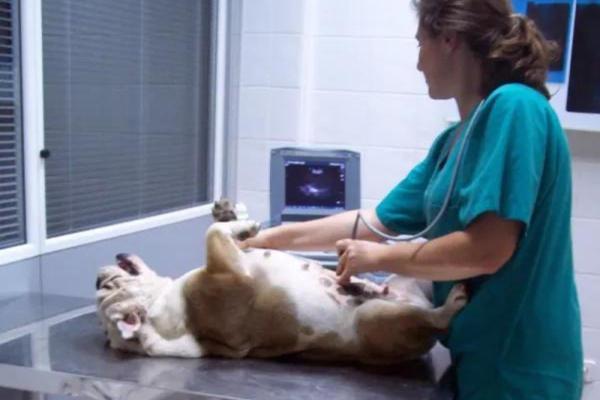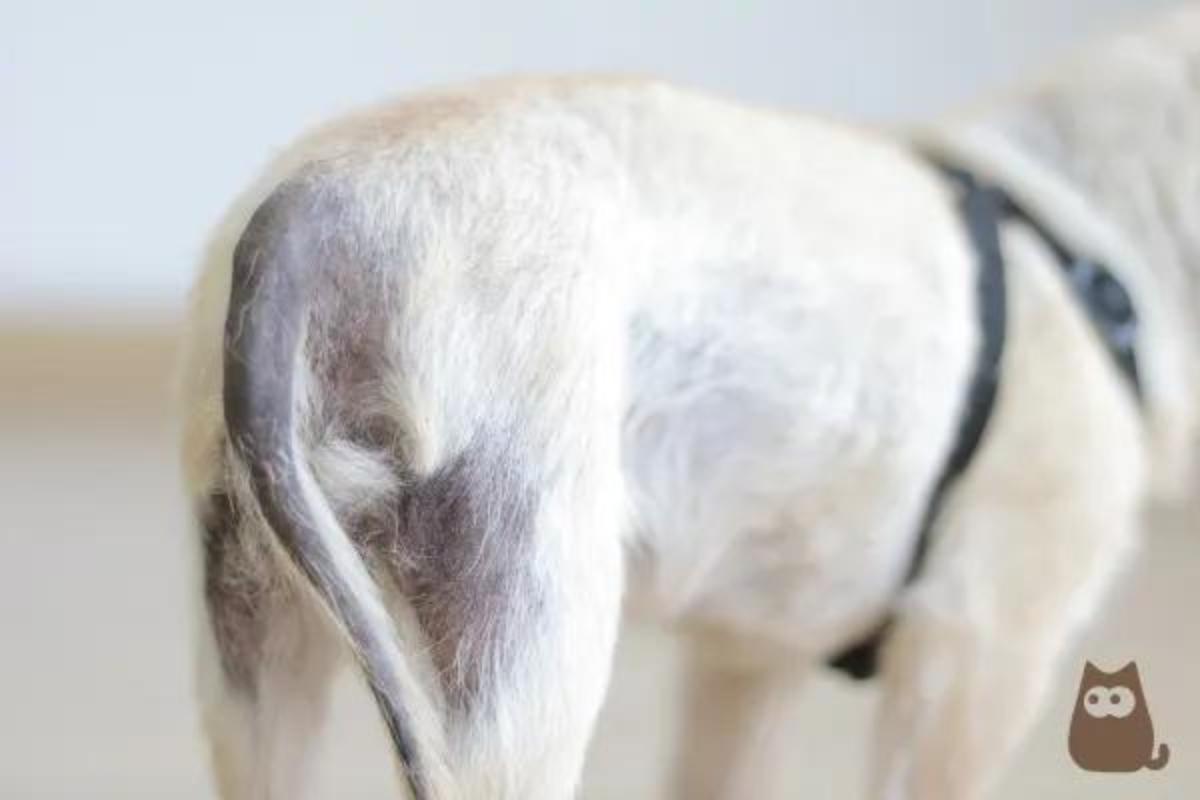Blood Clots in Dogs - Causes and Treatment



See files for Dogs
In a healthy dog, blood circulates in an orderly manner around the blood vessels. Since the transportation of blood around the body is vital to maintain the organism itself, good circulation is essential. Not only does poor circulation prevent the proper functioning of the cardiovascular system (and, by extent, all bodily functions), it can lead to specific blood disorders. One common issue is a blood clot, also known as a thrombus. Thrombi can be generated inside the blood vessels, which will cause a lack of blood flow to organs or body regions normally supplied by these vessels.
At AnimalWised, we explain more about blood clots in dogs. We explain their causes, symptoms and treatment so we can know what to expect if our dog has a thrombosis.
What are blood clots in dogs?
Blood clotting is a vital function for dogs. When they sustain a traumatic injury which causes blood vessels to break, clotting helps stop the blood flow and encourages healing of the wound. However, clotting inside the blood vessel is something different and can pose a serious health risk to the dog.
Thrombosis is the pathological process characterized by coagulation of blood (clotting) within blood vessels or within the heart of a living animal. The blood passes from a liquid state to form a solid mass, called a thrombus. Since there is only so much room inside a blood vessel, thrombi totally or partially occludes the vessel in which it is located. This compromises circulation in that vessel and hinders blood supply to the organs or body regions supplied by the affected vessels.
Thrombosis and embolism are terms that are often confused. It is important to note they do not mean exactly the same thing. Thrombi always remain attached to a vessel wall. Emboli are parts of a thrombus blood clot that break off and travel through the bloodstream until they reach a vessel small enough to occlude it.
Although blood clots in dogs can be located in any blood vessel, it is most common to find them in the:
- Pulmonary system
- Kidneys
- Aorta (the dog's largest artery)
- Generalized throughout the circulatory system (multi-organ involvement)
The three mechanisms that can give rise to this pathological process are known as Virchow's triad, which includes:
- Stasis of blood flow: turbulence, eddies or slowing phenomena (blood stasis) disorganize the flow columns inside the vessel, favoring the formation of thrombi.
- Endothelial injury/dysfunction: this is injury to the wall of the blood vessels. When the blood circulates in an orderly manner, negatively charged platelets circulate around the periphery. The endothelial cells of the blood vessel also have a negative charge, causing them to repel each other. However, when the vessel endothelium is injured, the positively charged subendothelium is exposed, encouraging platelets to aggregate and bind to the vessel wall.
- Hypercoagulability: there are certain pathologies that trigger an imbalance between pro-coagulant and anticoagulant factors, which favors the formation of blood clots in dog blood vessels.
Any of these causes, alone or in combination, can lead to the direct formation of blood clots. Find out more about blood clotting with our article on why a dog's wound won't heal.
Causes of blood clots in dogs
As we have just explained, thrombosis occurs as a consequence of some of the alterations that make up Virchow's triad. Specifically, the causes that can give rise to each of these alterations are:
- Alterations in blood flow: heart disease (mainly endocarditis and endocardiosis), anatomical malformations, increased blood viscosity and prolonged decubitus.
- Blood vessel wall injury: systemic inflammatory response syndrome (SIRS), sepsis, heartworms, neoplasms, severe trauma, injury from injections or intravenous catheters, vasculitis, toxic shock and atherosclerosis.
- Hypercoagulable states: Cushing's syndrome, kidney disease, gastrointestinal diseases, pancreatitis, disseminated vascular coagulation (DIC), neoplasms and heart disease.
Blood clots leading to thrombosis in dogs are especially common in cases of sepsis, kidney disease and heart disease. Learn more about the heart health of dogs with our article on canine dilated cardiomyopathy.

Symptoms of blood clots in dogs
The symptoms of blood clots occur as a consequence of the restriction of blood flow (ischemia) of the organs or body regions normally supplied by the affected vessel. Some of the most common symptoms seen in cases of thrombosis in dogs are:
- Weakness or paralysis of the hind limbs (in case of aortic thrombosis)
- Paleness of the skin
- Lack of pulse
- Pain in the affected body region
- Hypothermia of the affected body region
- Signs of insufficiency (dependent on organ affected)
Since the blood clot can affect any part of the body which is vascularized (i.e. contains blood vessels). When these blood vessels affect the brain, heart, liver, lungs or any vital organ, the signs of insufficiency will be particular to said organ. For example, neurological problems can arise when the dog's brain is affected.
Diagnosis of blood clots in dogs
The clinical symptoms of the patient may lead a veterinarian to suspect blood clots. To reach a diagnosis of thrombotic disease it is necessary to perform a series of complementary tests:
- Blood analysis: a blood sample should be taken from the patient to measure coagulation times, platelet count, determination of fibrinogen, antithrombin and fibrin degradation products (PDFs and D-dimers). It must be taken into account that these laboratory tests are not specific for the diagnosis of thrombosis, so normal results should not rule out the disease. Learn more with our article on how to understand a dog's blood test.
- Color Doppler ultrasound: this is a type of ultrasound that allows the evaluation of blood flow within blood vessels, by showing the speed and direction of blood in real time.
- Angiography: this is a type of contrast x-ray in which contrast material is inserted into the blood vessels.
Although imaging tests allow diagnosing thrombotic disease, it is necessary to carry out various diagnostic tests in addition to discerning the possible cause of the blood clot. For this reason, in these animals it is advisable to carry out:
- Blood analysis: complete blood count and biochemical profile
- Urinalysis: with protein/creatinine ratio
- Echocardiography: scan of the heart and its blood vessels
- Abdominal ultrasound
- Chest x-ray
Only in this way will we be able to determine the primary cause of the blood clot and establish the correct treatment.

Treatment of blood clots in dogs
When thrombi are recent and small, the body is capable of destroying them thanks to the action of thrombolysin. In cases of chronic or large thrombi, it is essential to establish a treatment based on the following factors:
- Induce a state of hypocoagulability: to reduce thrombus formation. This is achieved through the use of fibrinolytic or antithrombotic drugs (such as heparin and clopidogrel).
- Surgery: when the patient's conditions allows it, it will be necessary to remove the thrombus by means of a thrombectomy technique (surgical or percutaneous by catheterization). This allows the restoration of blood flow in the affected vessel.
Whenever possible, it will also be necessary to establish a specific treatment against the underlying pathology that has given rise to the blood clot. This will prevent future thrombi development.
This article is purely informative. AnimalWised does not have the authority to prescribe any veterinary treatment or create a diagnosis. We invite you to take your pet to the veterinarian if they are suffering from any condition or pain.
If you want to read similar articles to Blood Clots in Dogs - Causes and Treatment, we recommend you visit our Cardiovascular diseases category.
- Crespo, V., Mesa, I., & Ruiz de Gopegui, R. (2015). Retrospective study of 19 cases of thrombosis; etiology and location of thrombi. Small Animal Veterinary Clinic, 35(3).
- Serrano, B. Claretti, M., & Bussadori, C. (2022). Interventional management of abdominal aortic thromboembolism in three dogs. Axon communication.







